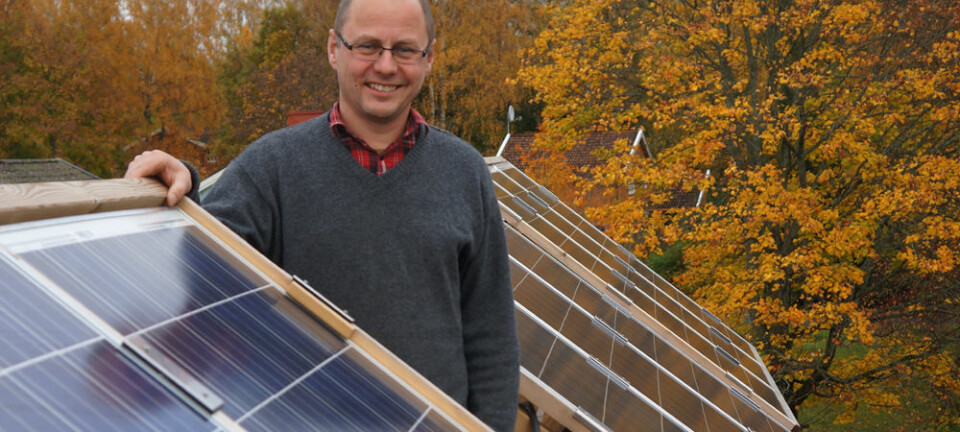
How to nudge consumers to make greener choices
Customers can be nudged into choosing environmentally friendly alternatives when shopping online.
Do you think you are above being manipulated into making certain choices as a consumer? Think again.
Consumers are more likely to take the environmentally friendly choice if it is presented as the default option. This is the result of two recent studies that looked at consumer behaviour.
Both studies looked at a type of consumer behaviour known as ‘the default choice’.
The theory is that consumers are more likely to choose a particular product if it is presented to them as the default choice. For example, a pre-selected option when shopping online.
Consumers have a tendency to avoid making decisions, especially when the implications of the decisions are rather complex or when they know little about them.
That means the default choice becomes attractive as it enables consumers to make a passive choice by simply leaving the preselected option untouched.
Nudging consumers to adopt smart grid technology
Madeleine Broman Toft a postdoctoral researcher at Aarhus University in Denmark is the lead author of one of the new studies. She has just completed her PhD in consumer behaviour, where she showed that European consumers could be nudged into purchasing a smart grid technology – a type of electricity meter to remotely control household electricity supply –when presented with it as a default choice.
Some of her research was published last year in the journal Energy Research & Social Science.
Her research targeted households in Denmark, Switzerland, and Norway, who were given information about the smart grid technology before asking them if they would be willing to have it installed in their homes free of charge.
At this point, consumers were randomly divided into 3 groups and given three different response choices: opt-out, opt-in, or a so-called neutral choice with no preselected option.
Setting the default choice to ‘yes’ forces consumers to actively choose to opt-out if they do not want to purchase the technology. Toft found that most of the respondents presented with this option, no matter their country, chose not to opt-out and thereby signed up for the scheme.
“In Denmark for example, the acceptance rate using the opt-out method or the neutral method was as high as 80 per cent. But this fell to as low as 50 per cent using the opt-in method,” says Toft.
The default choice of signing up for the smart-grid technology had similar results in a follow up study. Here, Toft sent letters out to Danish households with heat-pump technology already installed, and asked them to opt-in or opt-out of the smart grid technology. See the side story below this article for more information.
Two different studies come to the same conclusions
A new study, published this week in Nature Climate Change, not only reaches the same basic conclusions of Toft’s study, but also records similar levels of success in nudging consumers to make a ‘green choice’ in their energy consumption.
Felix Ebeling from the University of Cologne, Germany, and Sebastian Lotz from Stanford University, USA, studied consumer behaviour of almost 42,000 German households over the course of five weeks.
They asked prospective customers to a German electricity supplier whether they wished to select a green option or not. In this case, 100 per cent of their energy would come from renewable sources, but this would cost them more money each month.
This time, they randomly assigned consumers into one of two groups where the green choice was either pre-selected for them (the opt-out group) or not (the opt-in group).
As in the Danish study, they found that most customers signed up for the ‘green’ renewables contract when presented with it as a default option – up to 69.1 per cent. This fell to just 7.2 per cent in the group that had to actively opt-in to the scheme.
According to Toft the two studies complement each other very well.
“Our study is asking consumers to have new technology installed into their home and for their electricity supply to be regulated, so it is a big ask. The new German study is asking consumers to simply choose a ‘green choice’,” says Toft.
“So it’s really interesting that we see similar acceptance rates for these different scenarios in different countries based on a similar pre-selected default choice,” says Toft.
Helping the indecisive to decide
Toft says that presenting green choices as the default can motivate consumers who may otherwise be undecided about purchasing renewable energy or in adopting new smart grid technology.
This is highlighted in the German study particularly well, where they attempt to compare political views with consumer choices, says Toft.
The German researchers compared the amount of votes received by the ‘green party’ during the last federal election with the individual choices of the energy consumers who had participated in their study in that same area.
Comparing local election results for a postcode with individual choices does not tell the researchers how each of these people voted, but it does help them to understand whether consumers are motivated more by personal reasons such as political beliefs, or by the default choice on offer.
“It’s perhaps not surprising that people who vote for a green party will also probably opt-in for the renewable energy scheme without needing a nudge from any particular default choice,” she says.
“But there are of course many people with no particular preference for a green political party. They may be undecided on green issues and procrastinate with the decision as to whether or not to try renewable energy alternatives. Here, the opt-out scenario seems to nudge these people into choosing, in this case, renewable energy sources, or perhaps the smart grid technology in our study,” says Toft.
Is it ethical to nudge consumers?
People will inevitably ask if it is ethical to nudge consumers into purchasing a product that they may not otherwise have bought under different circumstances.
“Hardly any decision comes without a default choice and thus, policymakers need to decide which default to set,” write Ebeling and Lotz in their study.
In fact, most consumers in their study, between 80 to 100 per cent, were able to recall their choice correctly when asked about it afterwards. This indicates an active decision-making process, according to the researchers.
Toft agrees and says that there is strong evidence in both studies that whilst consumers were nudged, most of them were clearly aware of the choice they had made.
“What was really interesting in our online study was that the neutral group had no pre-selected options to choose from but they achieved the same acceptance rate as the opt-out group, around 75 to 80 per cent depending on the country,” she says.
“This suggests that they made their decision knowingly, whether nudged or not,” says Toft.
“However, more research is needed to confirm these findings, and especially it needs to be tested in real-life situations,” she says.
Scientific links
- The importance of framing for consumer acceptance of the Smart Grid: A comparative study of Denmark, Norway and Switzerland. Doi:10.1016/j.erss.2014.07.010
- Domestic uptake of green energy promoted by opt-out tariffs. Doi:10.1038/nclimate2681










